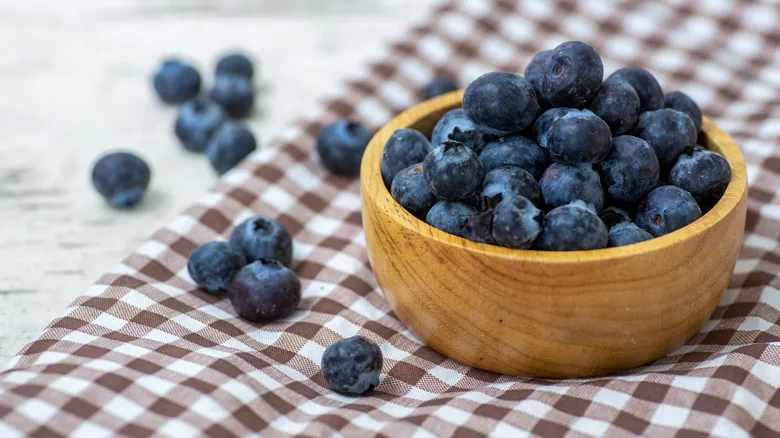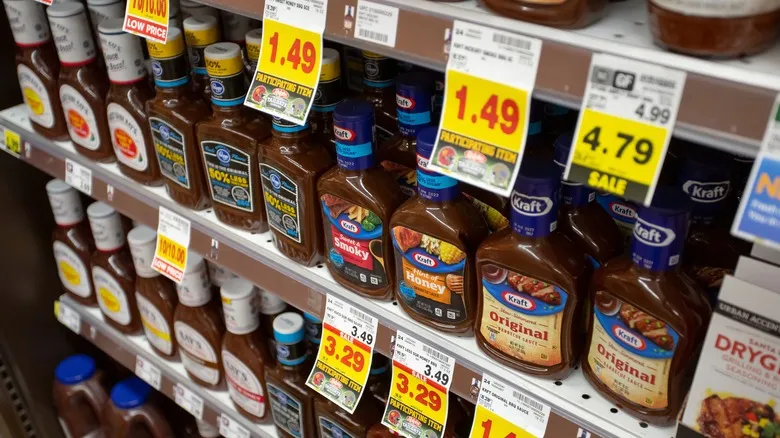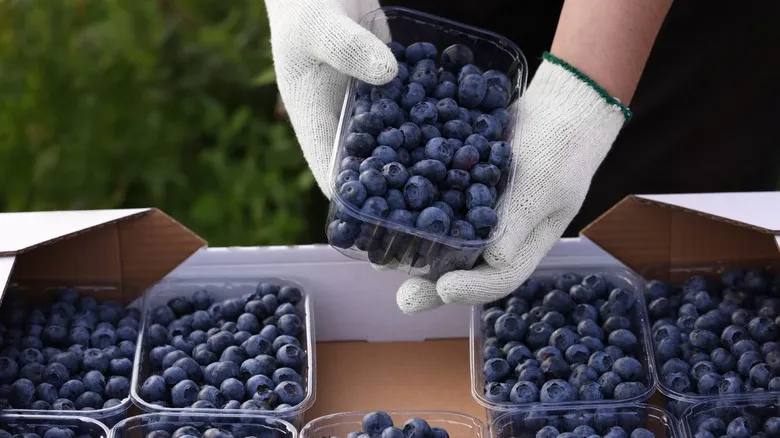When buying blueberries, check their color and smell

Blueberries are indeed blue, but their hues can vary based on the type, which might surprise you. For instance, Bluecrop blueberries are darker compared to Misty blueberries. When selecting these fresh fruits, instead of concentrating solely on the shade of blue, pay attention to their shape. Look for blueberries that are plump and firm; avoid any that appear shriveled. You may also observe a powdery coating on the berries that gives them a slightly gray or silver appearance. This is known as bloom, and it is completely normal.
High-quality, fresh blueberries typically have little to no aroma. If you're inclined to sniff each container while shopping, ensure you don't detect any strong sour or unpleasant smells, as these could indicate that the berries are no longer fresh. Trust your instincts when it comes to assessing their scent.
Do a visual inspection for mold

One drawback of selling berries in containers is that they tend to be stacked on top of one another in the carton, which can lead to excess moisture. If you've ever examined the bottom of a berry container, you may have noticed that some of the fruit appears damp or even shows signs of mold. Be sure to steer clear of any containers that exhibit these issues.
Perform a visual inspection for any fuzzy spots, as this indicates the presence of mold. Even if only one blueberry shows signs of mold, it can quickly spread to the others in the container. Additionally, if you turn the blueberries over and they appear overly soft underneath, it's a sign that they are no longer fresh.
Pro tip: If you get home and discover mold on some of the blueberries, don’t discard the entire container. Simply remove the spoiled berries (along with any that were in contact with them), and you can still enjoy the remaining fresh ones.
Buy blueberries in season

One of the best ways to ensure you get high-quality blueberries is to buy them when they are in season. Purchasing local blueberries at their peak means there is minimal time between when they are harvested and when you place them in your shopping cart. This helps to enhance their flavor and extend their shelf life, providing you with the freshest berries that last longer.
If local berries are not available during their season, consider their origin. If they have been shipped from another country, they may have been treated with chemicals to prevent spoilage during the long journey. While this doesn’t necessarily make them unsafe to consume, it could affect their taste, making them less juicy and sweet compared to fresh, local options. Although there may be limited choices at certain times of the year, for the best flavor and texture, opt for local blueberries from your grocery store whenever possible. In the United States, they are typically at their best from April to September, peaking during the summer months.
Recommended

How To Tell If Your Bread Is About To Go Bad

9 Tell-Tale Signs Your Potatoes Have Gone Bad

The Smartest Way To Store Cobb Salad So It Stays Fresh

When Does Store-Bought BBQ Sauce Really Go Bad?
Next up

